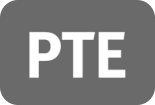In recent years, the rise of the hybrid mode of education has transformed the traditional learning landscape, offering students and educators a more flexible and adaptable approach to learning. Hybrid education combines elements of both online and in-person learning, providing students with the opportunity to engage in interactive and collaborative learning experiences.
With its many advantages, hybrid education has become increasingly popular among students, educators, and institutions alike. In this article, we will explore the various benefits of hybrid learning.
In education, blended or hybrid learning models offer the unique advantage of combining the advantages of both in-person and remote instruction. For clarity’s sake, let us understand some important terms before continuing.
In-person Learning
In-person learning refers to a traditional form of education where students physically attend classes in a physical classroom or educational institution. In this mode of learning, students interact with their teachers and peers face-to-face, engaging in activities such as lectures, discussions, group work, and hands-on learning experiences.
This mode of learning has been the standard approach to education for centuries, and it remains a popular choice for many learners, despite the increasing popularity of online education and blended learning models.
Remote Learning
Remote learning, also known as online learning, refers to a mode of education where students engage in learning activities through digital technologies and virtual platforms. In this mode of learning, students and instructors may be geographically separated, and interactions are mediated through various online tools, such as video conferencing, discussion forums, and learning management systems.
Remote learning provides flexibility, convenience, and access to a variety of educational resources and materials. This mode of learning has gained significant popularity in recent years, particularly with the advancement of technology, and it has become a viable alternative to traditional in-person learning in many educational institutions.
Synchronous and Asynchronous
Synchronous learning refers to a mode of learning where students and instructors are engaged in learning activities at the same time. This mode of learning typically involves live lectures, real-time discussions, and interactive activities that require immediate participation from both students and instructors. Synchronous learning may take place in person, through video conferencing, or through other online platforms.
Asynchronous learning, on the other hand, refers to a mode of learning where students and instructors engage in learning activities at different times. In this mode of learning, students have the flexibility to access learning materials and complete assignments at their own pace, without the need for immediate participation from instructors or peers. Asynchronous learning may involve pre-recorded lectures, discussion forums, and self-paced activities.
Hybrid Learning
A hybrid mode of education has become increasingly popular in recent years, particularly in response to the COVID-19 pandemic, which has forced educational institutions to adopt more flexible and adaptable approaches to education.
Hybrid learning, also known as blended learning, is a mode of education that combines two or more modes of learning, usually in-person and remote learning. In this mode of learning, students engage in a mix of traditional in-person classes and online learning activities, which may include pre-recorded lectures, discussion forums, interactive simulations, and other digital tools.
Benefits of Hybrid Learning
Flexibility
One of the primary benefits of a hybrid mode of learning is increased flexibility. Students can engage in learning activities at their own pace and at times that are most convenient for them. This flexibility allows students to balance their academic commitments with work, family, and other responsibilities.
Personalized Learning
Hybrid mode offers personalized learning opportunities, as students have access to a range of digital resources and materials that can cater to their individual learning styles and preferences. This mode of learning allows students to engage in interactive activities that promote critical thinking, problem-solving, and collaboration.
Cost-Effective
A hybrid mode of learning can be a cost-effective alternative to traditional in-person learning, as it reduces the need for on-campus resources and infrastructure. This mode of learning can also help reduce travel expenses, as students do not need to commute to campus for every class.
Accessibility
Hybrid learning can improve accessibility, as it allows students to engage in learning activities from any location with an internet connection. This mode of learning can be particularly beneficial for students who may have physical disabilities or live in remote areas.
Improved Learning Outcomes
The hybrid mode can lead to improved learning outcomes, as students have the opportunity to engage in a variety of learning activities that cater to different learning styles and preferences. This mode of learning can also help students develop self-directed learning skills, which can be beneficial for their future academic and professional endeavors.
Key Takeaways
A hybrid mode of education is becoming an increasingly popular mode of learning in response to the changing needs of students and the advancements in digital technologies. Institutions that adopt hybrid education can provide students with a high-quality education that is tailored to their individual needs and preferences, preparing them for success in their future academic and professional endeavors.












